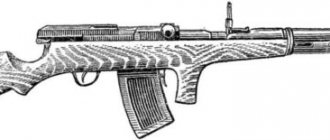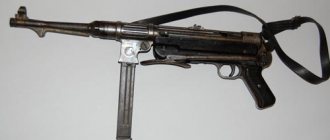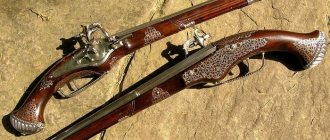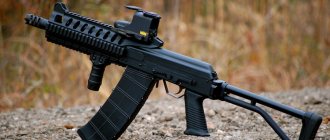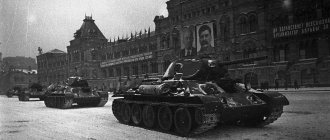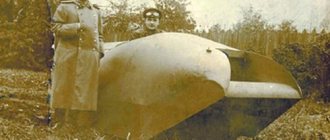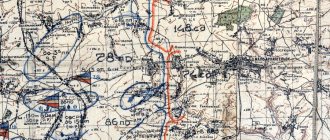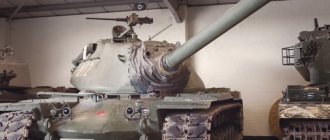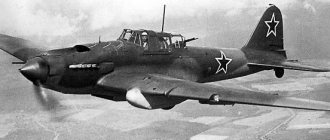How many tanks took part in the Battle of Kursk
The first question that interests all researchers of this battle and ordinary history buffs is the number of tanks on the Kursk Bulge on both sides.
So how many tanks participated in the Battle of Kursk on each side?
On the Soviet side, 2,758 tanks and self-propelled guns took part in this grandiose series of battles; from German – 3444.
There are different opinions about how many of this number of armored vehicles were on the move and actually participated in the battles, and how many were faulty and were only “listed on the balance sheet.” But the initial numbers are exactly like that.
But, in addition to how many tanks took part in the Battle of Kursk, it is also important what kind of tanks they were. Next - about those models that, according to reliable information, definitely took part in the battles on the Kursk Bulge.
Confrontation
The Soviet command was aware of the exact time of the start of the German operation. Therefore, the necessary counter-preparations were carried out. The Nazis began the assault on the Kursk Bulge on July 5 - this is the date the battle began. The main offensive attack of the Germans was in the direction of Olkhovatka, Maloarkhangelsk and Gnilets.
The command of the German troops sought to get to Kursk along the shortest route. However, the Russian commanders: N. Vatutin - Voronezh direction, K. Rokossovsky - Central direction, I. Konev - Steppe direction of the front, responded to the German offensive with dignity.
The Kursk Bulge was supervised by talented generals from the enemy - General Erich von Manstein and Field Marshal von Kluge. Having received a repulse at Olkhovatka, the Nazis tried to break through at Ponyry with the help of the Ferdinand self-propelled guns. But here, too, they were unable to break through the defensive power of the Red Army.
From July 11, a fierce battle raged near Prokhorovka. The Germans suffered significant losses of equipment and people. It was near Prokhorovka that a turning point in the war occurred, and July 12 became a turning point in this battle for the 3rd Reich. The Germans struck immediately from the southern and western fronts.
One of the global tank battles took place. Hitler's army brought 300 tanks into the battle from the south, and 4 tank and 1 infantry divisions from the west. According to other sources, the tank battle consisted of about 1,200 tanks on both sides. The Germans were defeated by the end of the day, the movement of the SS corps was suspended, and their tactics turned defensive.
During the Battle of Prokhorovka, according to Soviet data, on July 11-12, the German army lost more than 3,500 people and 400 tanks. The Germans themselves estimated the losses of the Soviet army at 244 tanks. Operation Citadel lasted only 6 days, in which the Germans tried to advance.
Tanks that participated in the Battle of Kursk from the Red Army
The T-34 tank, our “weapon of Victory,” bore the brunt of this battle on its steel shoulders. Near Kursk, Soviet troops used tanks of the T-34-76 modification: T-34-85, with more powerful guns, were just getting ready to go into mass production.
In 1943, five factories (in Nizhny Tagil, Gorky, Sverdlovsk, Chelyabinsk and Omsk) produced over 15,600 T-34-76 tanks - 79% of the total number of tanks produced in the USSR.
Due to Germany launching mass production of armored vehicles of new models with enhanced armor, the effectiveness of the 76.2 mm guns of T-34 tanks was clearly insufficient. However, there were not so many “Tigers” and “Panthers” at the Kursk Bulge - the bulk of the German tanks were old models, with which the T-34-76 could compete on equal terms and even surpass them.
T-34/76
Contrary to some opinions, old Soviet light tanks of pre-war models were not used at all on the Kursk Bulge. By this period of the war, they had all already fallen out of service - both due to combat losses and due to hopeless moral and technical obsolescence. Such vehicles could not resist the powerful and updated tank fist of the German army.
The second, after the T-34-76, tank of the Soviet troops in the Battle of Kursk was the heavy KV-1 (and modification of the KV-1s). The IS-1 heavy tanks also had not yet been put into production in the summer of 1943.
KV-1
According to some reports, heavy KV-2 tanks were also involved in the battle on the Kursk Bulge - in very small quantities, 1-2 units. But there is no absolutely reliable evidence of this.
Battle of Kursk. Wehrmacht tanks
For the Wehrmacht medium tank Pz.Kpfw. The III Battle of Kursk and the entire year of 1943 became the “swan song”. By this time it was already hopelessly outdated, and the reserves of its design were exhausted.
Pz.Kpfw. III
But there were a lot of these tanks in the troops, they were excellently mastered by the crews. And spaced armor, good maneuverability and a fairly powerful gun have so far allowed the Pz.Kpfw. III fight the T-34-76 almost on an equal footing.
The second largest German tank near Kursk is the PzKpfw IV. An armored vehicle, which is a modernization and development based on the previous model, and with more powerful weapons: a 75 mm gun.
PzKpfw IV
At Kursk, many tanks of this model were equipped with additional metal sheets (this is not armor, but just sheet metal). They helped to increase the survivability of the armored vehicle: so that the projectile exploded before it “opened” the main armor. When there was a shortage of rolled steel, they hung up nets that coped with this task just as well. (but that was later, in 1944).
PzKpfw V "Panther" tanks began to be produced back in 1942, but these armored vehicles found their first mass use precisely in the battle of Kursk.
PzKpfw V
The Germans had a total of about two hundred tanks of this model on the Kursk Bulge. Almost everyone is in the 39th Tank Regiment. Typically, its personnel were trained on the PzKpfw IV, and received Panthers only in May 1943. The Kursk Bulge became a serious test of strength for this model. The Panther tanks showed their best side, and their production volumes began to increase.
Pz Kpfw VI
The heavy tank Pz Kpfw VI "Tiger" is the most famous of all German armored vehicles. By the summer of 1943, the Germans had already tested it in many battles, on different sectors of the front. Both combat use and maintenance of the Tigers were already proven. But in the tank battle on the Kursk Bulge, the German command was able to attract no more than 150 tanks of this model.
Tank losses in the Battle of Kursk on both sides
Tank losses on both sides in the Battle of Kursk are a topic of endless debate. Moreover, it is impossible to determine exactly how many tanks were lost irretrievably, and how many returned to service after repair and restoration.
One thing is certain, Soviet losses exceeded German ones (but not by many times, as some historians claim). They were quite comparable - despite a number of gross mistakes that led to serious losses (these, by the way, include the battle of Prokhorovka). General Tippelskirch, describing attempts to “cut off” the Kursk salient of the front, concludes: “The German troops suffered irreparable losses were drained of blood and could no longer achieve this goal.” If Soviet losses were many times higher than German ones, the conclusions would have been different.
German aviation losses in the first year of the war on the Eastern Front.
(According to German documents)
The calculation of the Wehrmacht command was clear: neutralize Soviet aviation, ensure air supremacy and switch the main efforts of the Luftwaffe to direct support of ground forces. The implementation of this plan led to the fact that, according to the Germans, on the first day of the war, 888 Soviet aircraft were destroyed on the ground, and 223 in the air. These data are not much different from the data contained in Soviet official sources: in total, about 1,200 aircraft were lost, 800 of them at airfields.
However, the intentions of the attacking side to destroy Soviet aviation in the border areas with one or two powerful blows and demoralize the personnel of the Air Force units and formations were not fully realized. On the first day of the war, Soviet pilots carried out about 6 thousand combat missions and shot down dozens of enemy aircraft.
“Despite the surprise achieved by the Germans,” German generals and officers admitted, “the Russians managed to find the time and strength to provide decisive resistance.”
The command and headquarters of the Air Force of the Odessa Military District, for example, relying on intelligence data, on June 21 brought the aviation units into combat readiness and dispersed them to alternate airfields. During German air raids here on the ground and in the air, only 6 aircraft were lost, while many more enemy aircraft were shot down. And in other border districts, where combat duty and air combat operations were better organized, the attackers met stubborn resistance.
Between June 22 and July 5, the Luftwaffe lost 807 aircraft on the Eastern Front (this number includes those that were completely destroyed and those requiring major repairs). From July 6 to August 2 – another 843 aircraft. In total, from the morning of June 22 to December 31, 1941, combat losses of German aviation amounted to 4,543 aircraft, of which 3,827, or 82%, were on the Eastern Front. According to the flight personnel, the losses in killed, wounded and missing were 7,666 people, of which 6,052 or 79% were on the Eastern Front.
The Luftwaffe command noted in its reports that with the outbreak of the war in the East, the gap between the losses of aircraft, flight personnel and the replacements received was constantly increasing.
Here is data from original German documents. The commander of aviation at Army Group South informed the Luftwaffe headquarters about the losses of reconnaissance aircraft for the period from June 22 to October 4, 1941: “97 of our reconnaissance aircraft were destroyed by the enemy. 92 flight crew were killed. 41 wounded. These losses were mainly from enemy fighters. In addition, 27 transport and communications aircraft that were subordinate to these squadrons were destroyed. Another 38 aircraft were killed or damaged without enemy exposure. Note: aircraft that were damaged in battle and restored in units are not included in the records.” Headquarters of Army Group South.
In fact, it was a failure of the “blitzkrieg” for aviation too.
Comparing the losses of the Luftwaffe in one month on the Eastern Front with those that occurred over the same period of time during the “Battle of Britain” and during Germany’s capture of European countries, we come to an unequivocal conclusion: in Russia the Germans lost more aircraft and pilots.
And two more tables from the report of the Wehrmacht leadership to Hitler in February 1945. The data is taken from Fritz Hahn’s book “On the Wehrmacht’s losses in men and equipment,” published in Germany.
